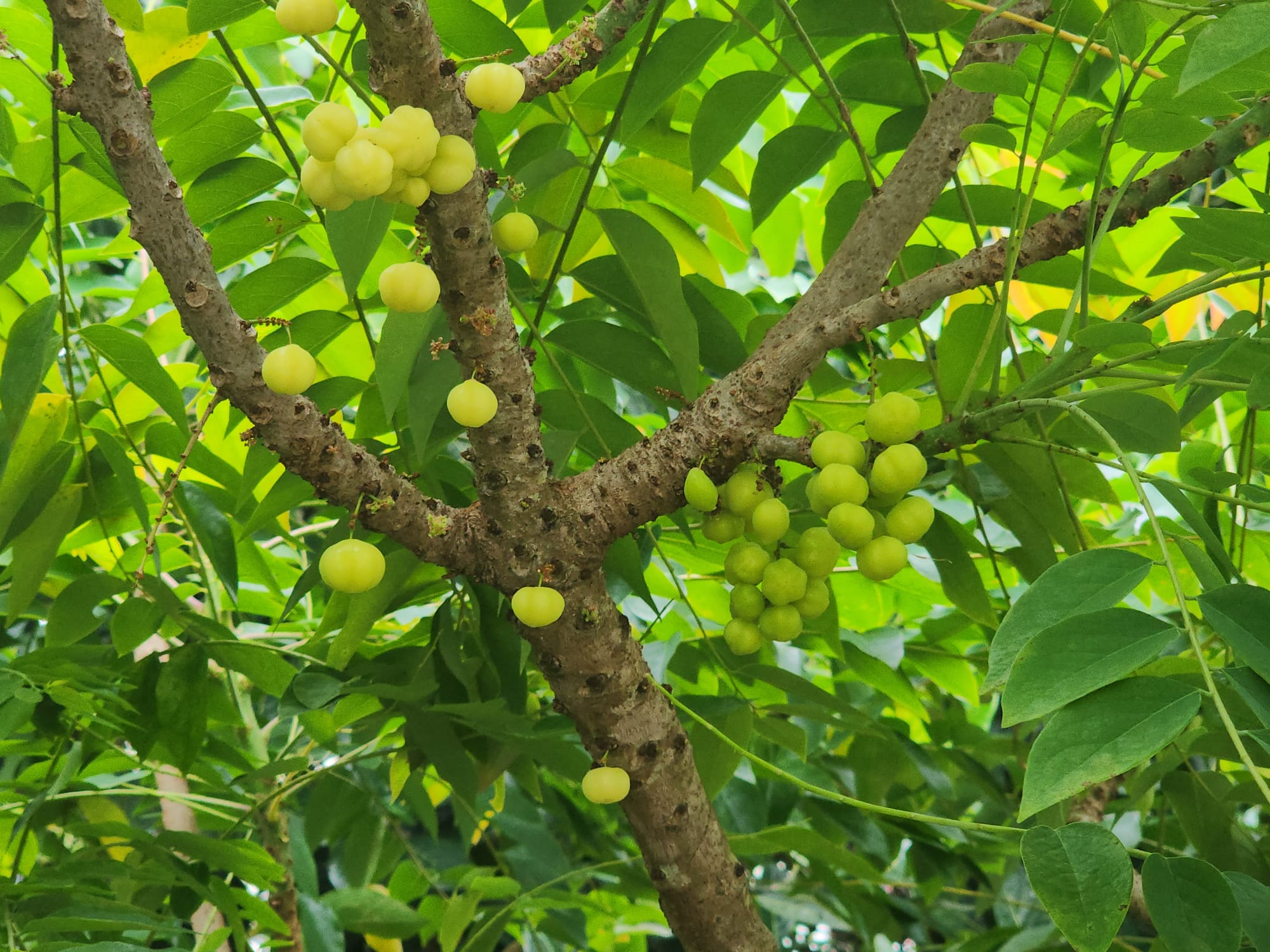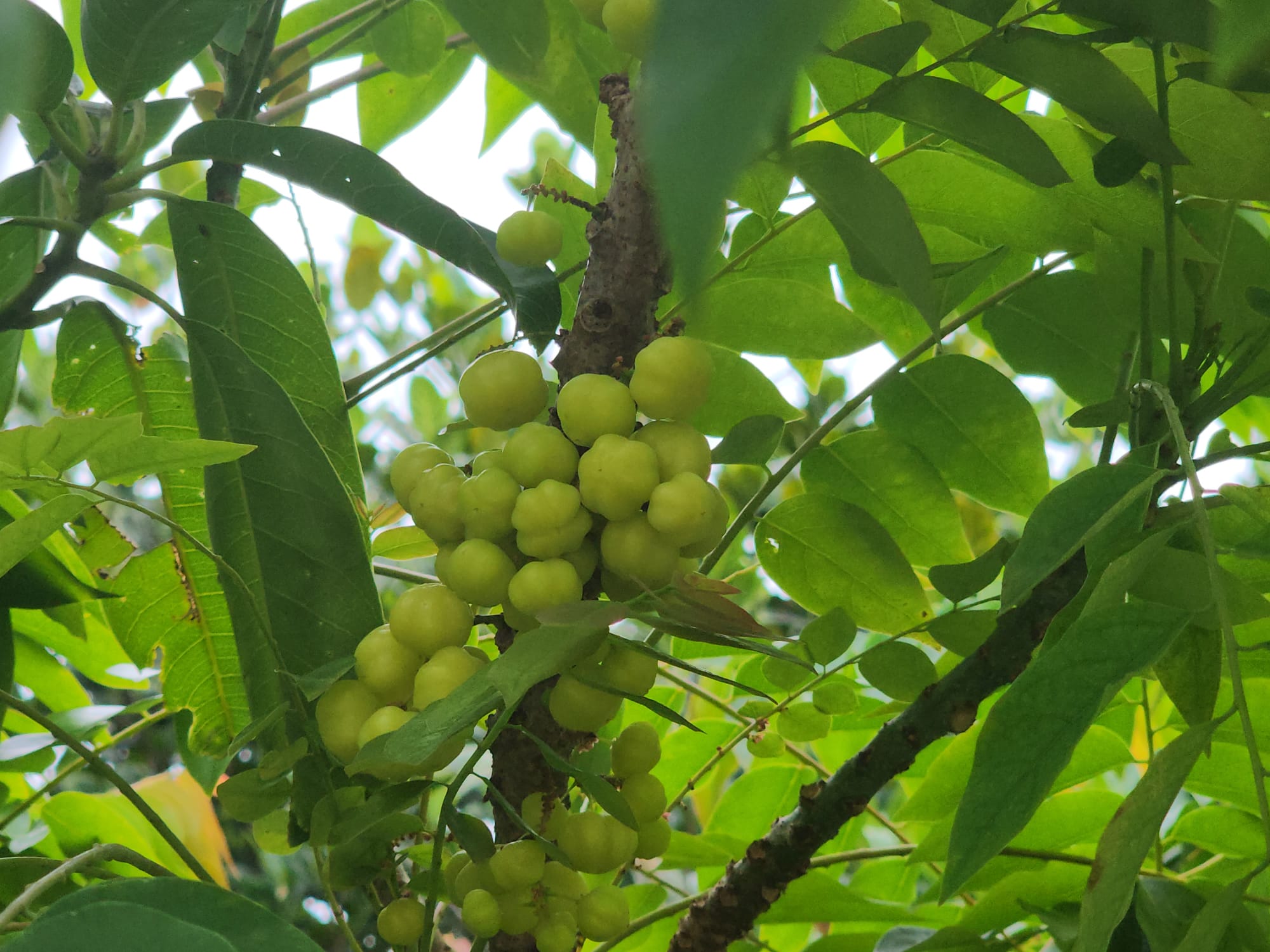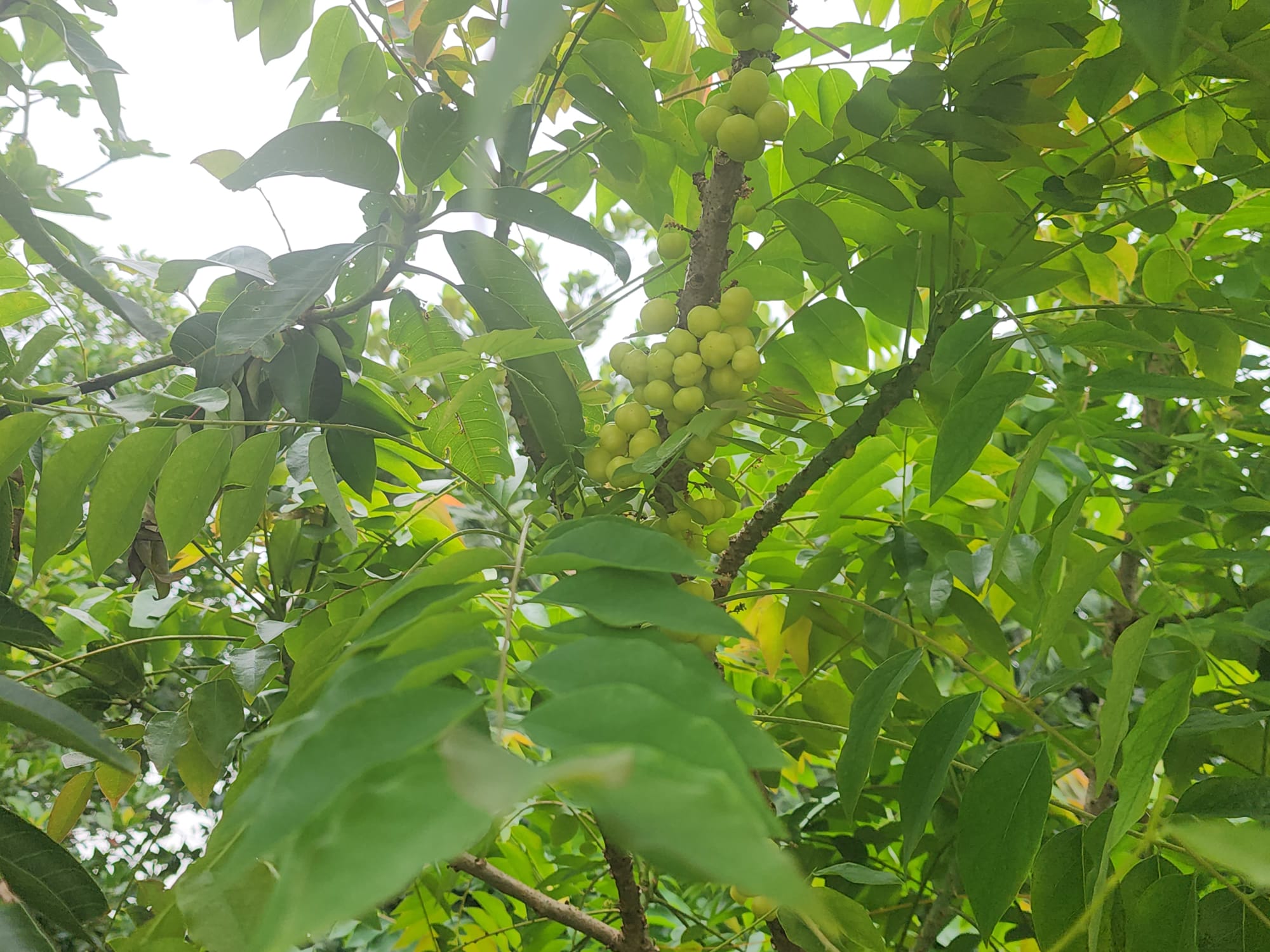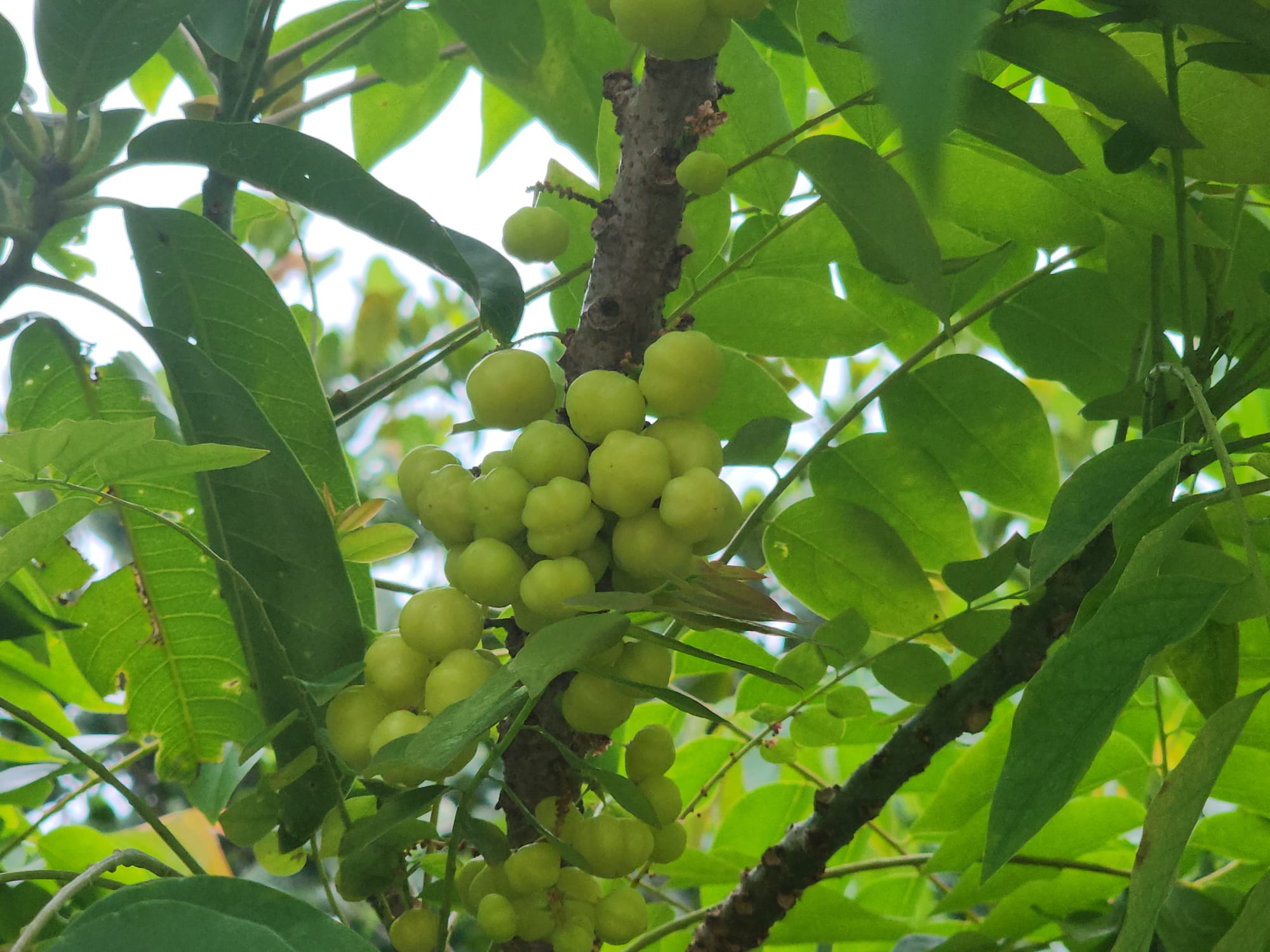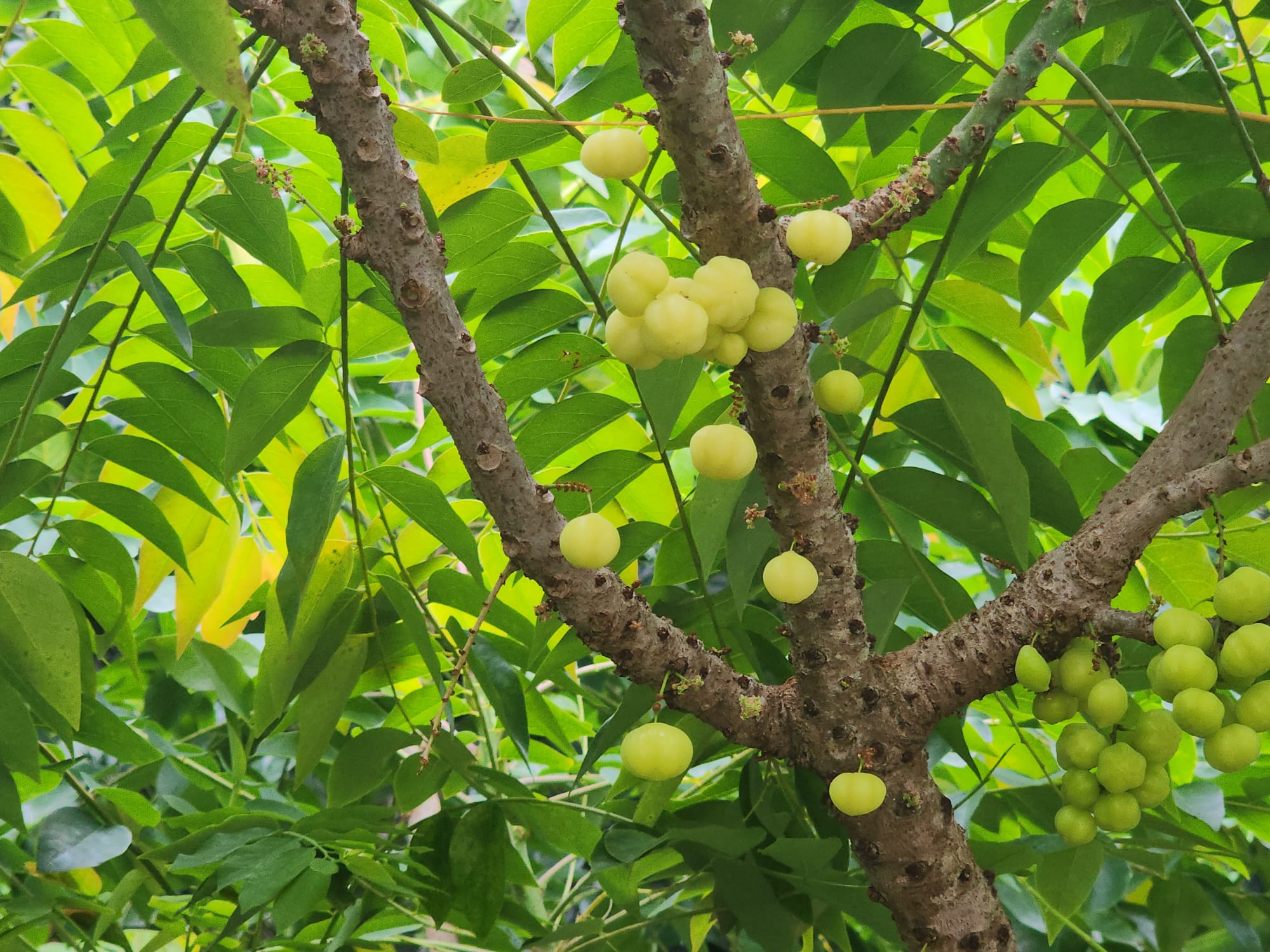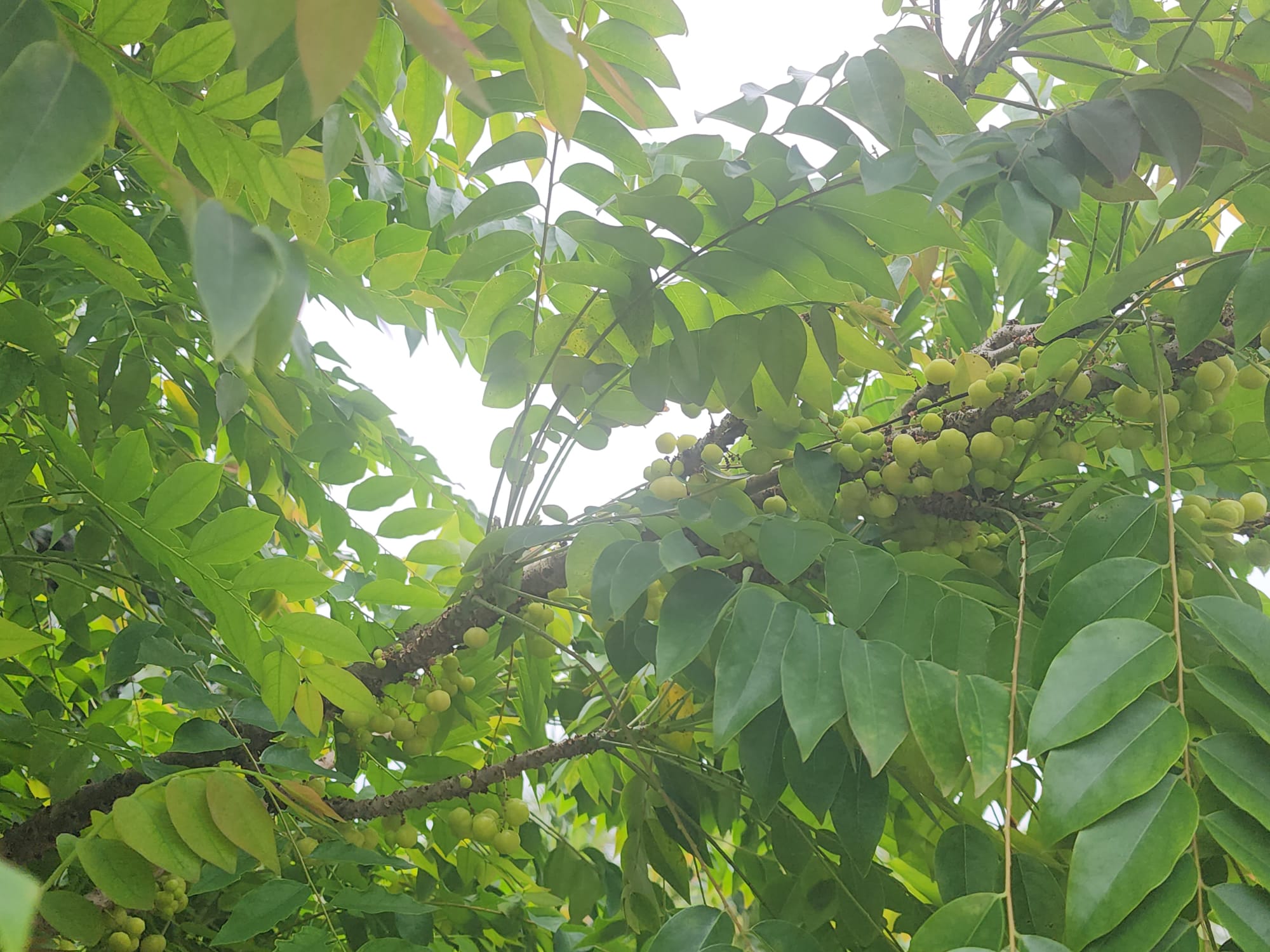Description
Star gooseberry Plant for Home Garden
The Star Gooseberry (Phyllanthus acidus) is a small tropical fruit tree that belongs to the Euphorbiaceae family. It produces small, round, tart fruits that are green when immature and turn yellow as they ripen. These fruits grow in clusters and are known for their sharp, sour taste, mainly used in cooking or making preserves. The plant is native to Southeast Asia and can be found in tropical and subtropical regions. The tree is sometimes referred to as the "Amla" or "Indian Gooseberry" in some areas due to its similar fruit characteristics.
The plant is named "Star Gooseberry" because of the unique star-shaped markings on the surface of the fruit when sliced. It's a fast-growing tree and can be grown as a shrub or a small tree, depending on how it's maintained.
Growing Specifications:
- Height: Typically grows to 4-8 feet tall, but can be pruned to maintain a smaller size.
- Spread: About 4-8 feet wide, though this can be reduced with pruning.
- Fruit Size: The fruit is about 1-2 cm in diameter, round, and green to yellow when ripe.
- Bloom Time: The plant blooms in spring to summer, with fruit maturing in late summer or early fall.
- Flower Color: Small, yellow-green flowers.
- Type: Deciduous shrub or small tree.
Suitable Gardens:
- Tropical & Subtropical Gardens: Star gooseberries grow well in warm, humid climates and are perfect for tropical or subtropical regions.
- Edible Gardens: Great for gardeners interested in growing fruit-bearing plants, specifically for those looking to experiment with unique, sour fruits.
- Container Gardens: In cooler climates, it can be grown in containers and moved indoors during the colder months.
- Wildlife Gardens: This plant can also attract various pollinators like bees, which can benefit other garden plants.
Features and Benefits:
- Tart, Unique Fruit: The fruit of the star gooseberry is tangy, similar to a sour berry, and is used in a different variety of dishes, including chutneys, jams, and preserves.
- High Vitamin C Content: The fruit is a rich source of vitamin C, which is beneficial for immune support and skin health.
- Health Benefits: The star gooseberry has antioxidant properties and is often used in traditional medicine for its digestive and anti-inflammatory properties.
- Decorative Appearance: The plant has a bushy, compact appearance with attractive foliage and star-shaped fruits, making it an interesting addition to the garden.
- Fast-Growing: The plant grows relatively quickly, providing fruit production within a few years.
- Low Maintenance: Once established, star gooseberries require minimal care and are resistant to drought.
Growing Requirements:
- Soil: Prefers well-drained, slightly acidic soil, but can tolerate a range of soil types.
- Light: Full sun is ideal for the star gooseberry plant, but it can tolerate partial shade.
- Water: Regular watering is essential, especially during dry spells. However, over-watering is not good for the plant.
- Temperature: It thrives in warm temperatures and should be protected from cold weather.
- Humidity: Star gooseberries prefer high humidity, so growing them in tropical or subtropical conditions is ideal.
- Fertilization: Fertilize with a balanced fertilizer to encourage healthy growth and fruiting. Organic compost or manure is also beneficial.
- Pruning: Prune to maintain the plant’s shape and encourage a compact, bushy growth. Removing dead or damaged branches and leaves will help improve airflow and prevent disease.
Why Choose a Star Gooseberry Plant?
- Unique Fruit: The star gooseberry provides a tangy, unique fruit that isn’t commonly found in grocery stores, making it an great addition to any garden.
- Health Benefits: With its high vitamin C content and antioxidants, the fruit is a great choice for anyone looking to boost their immune system and overall health.
- Exotic Appeal: The star-shaped fruit and wonderful foliage make this plant a conversation starter and a standout in any tropical or subtropical garden.
- Fast and Easy to Grow: The star gooseberry is a relatively low-maintenance plant that grows quickly and provides fruit within a few years.
- Edible and Sustainable: It produce fruit that can be used in a variety of culinary applications, but it's also a sustainable choice for home gardeners interested in growing their own food.
- Drought Tolerance: Once established, the plant is fairly drought-tolerant, making it a suitable option for water-conserving gardens.

